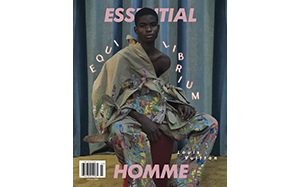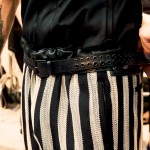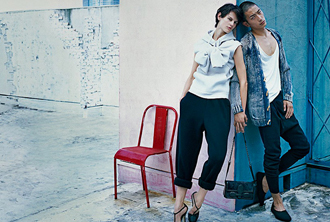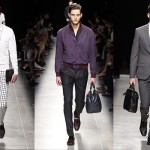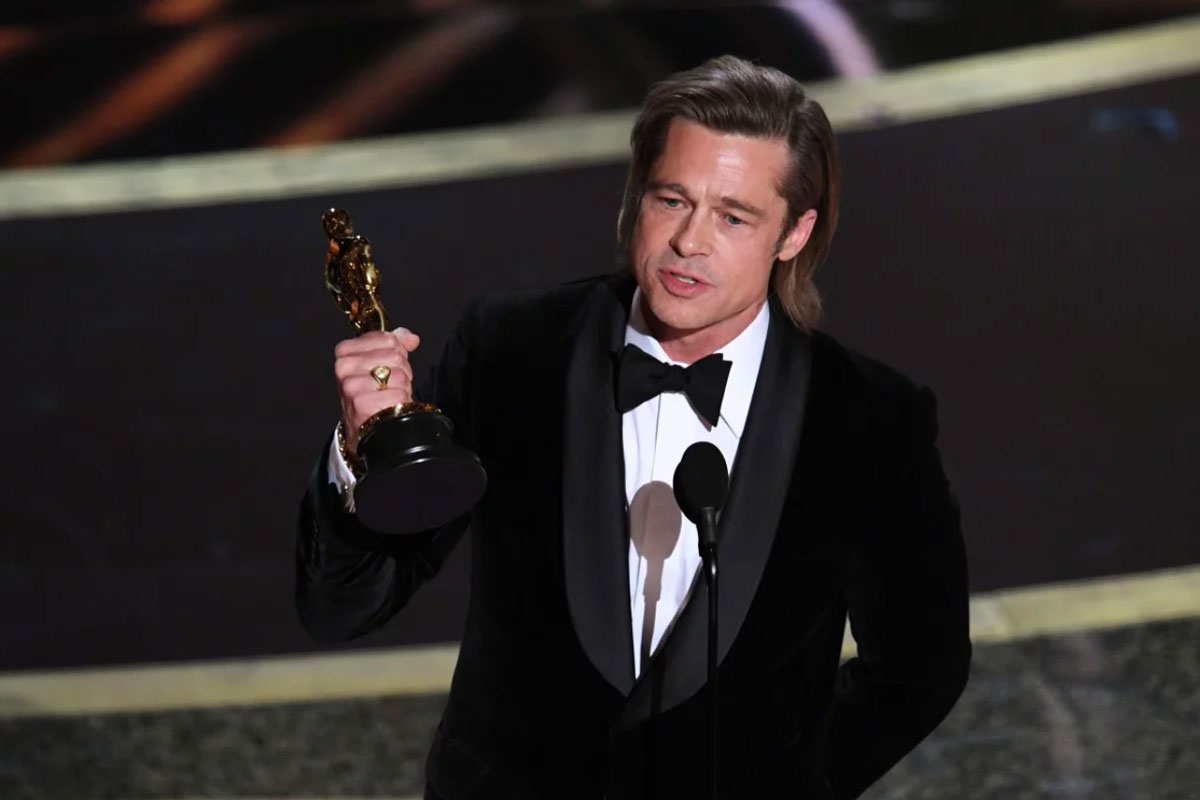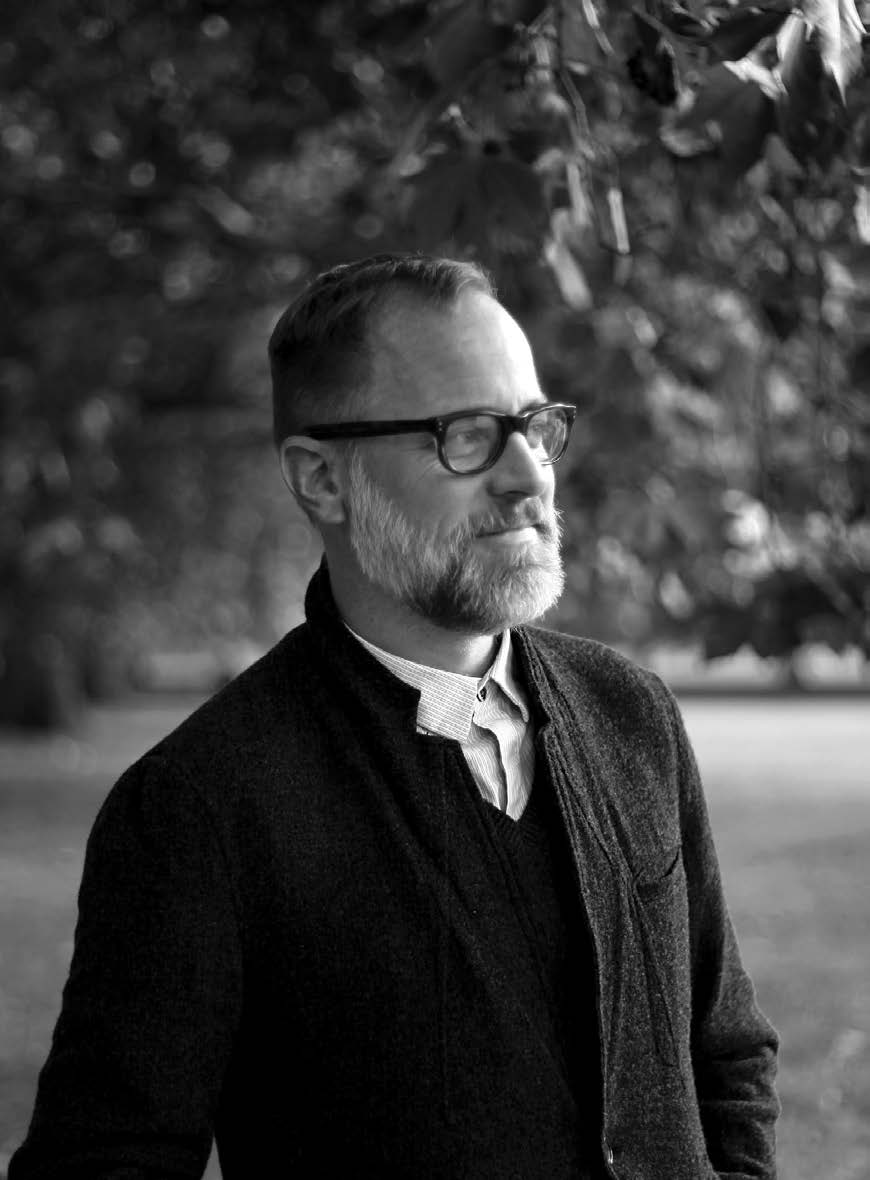
CONVERSATIONS: Bergdorf Goodman’s Bruce Pask
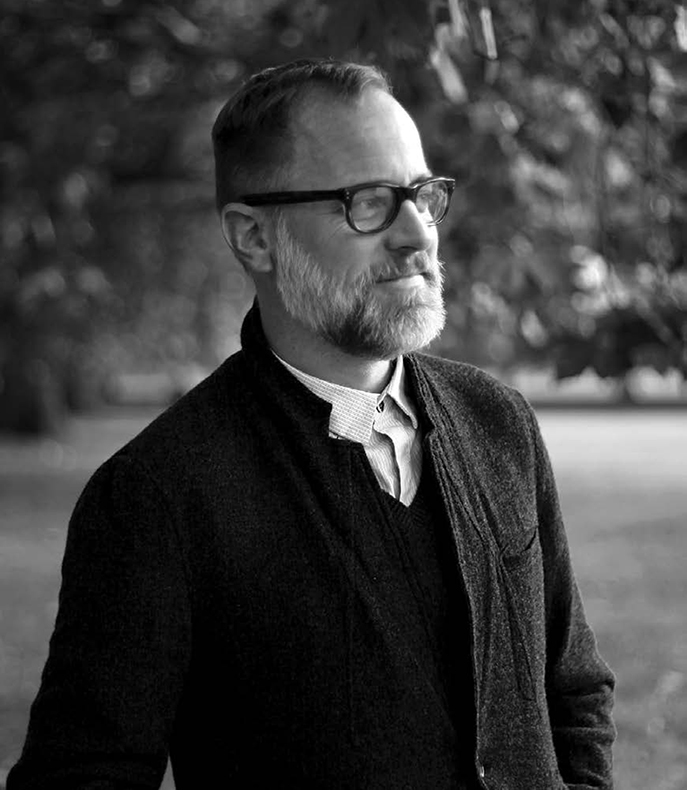
Image photographed by Jonathan Daniel Pryce.
One of the fashion industry’s most respected individuals: Bruce Pask, Men’s Fashion Director at Bergdorf Goodman, discusses his own past, present, and future.
Essential Homme: Your scholastic background suggests a strong interest and accomplished skill set in both art history and economics. Shortly after college you joined the team at GQ. How did this come about? Was it a long time dream for you to be a part of the fashion industry?
Bruce Pask: While in high school during the heyday of the Preppy Handbook and all those John Hughes movies, we really did aspire to that aesthetic that seemed so exotic to us in the small town of Yuma, Arizona. It was an escape for me and my friends who pored over fashion magazines and shopped very seriously with our incredibly limited budgets. I chose to attend a liberal arts school, The College of William and Mary, in order to explore both the practical and the artistic sides of my personality, studying Economics and Art History. Art History ultimately won out.
I moved to NYC with friends in order to attend graduate school and got a job as a stock boy and weekend store help at Paul Smith on Fifth Avenue, a position that I found advertised in the classifieds in the back of the Village Voice. I stayed in grad school for about a week before realizing that fashion was where I wanted to focus my attention. So I left the halls of academe in favor of the shop floor.
I vividly remember choosing to wear a rather loud postcard print shirt, mustard pants, and a brown double-breasted jacket to my interview at GQ Magazine. Luckily, and gratefully, I got the job. Working at GQ with Jim Moore as a mentor was much like attending a graduate school. I learned everything about menswear, fabrics, designers, styling, art direction, all of it. It’s where I developed and honed a point of view and a style.
EH: In 2000, you departed GQ and you spent roughly three years working as a stylist and also as a costume designer. What prompted this change?
BP: I spent almost a decade at GQ working with Jim Moore and the team there, first as an assistant, and then assisting on shoots, working my way up to market editing and styling my own shoots, ultimately serving as associate fashion director. It was a fantastic life working with such an amazing group of talented editors, traveling to the fashion shows in Europe and shoots all over the world, working with gifted photographers and creative teams. I absolutely loved it. But there was a point when I felt that I wanted to pursue other possibilities in menswear and styling, and it necessitated taking the leap and going out on my own to explore. It was certainly a challenging decision to leave GQ and Jim, who has always been incredibly generous to me throughout my career there and he continues to be to this day.
“
Annie Leibovitz taught me
an incredible amount about naturalism
in fashion and styling, and how clothing
can help get to the heart and truth
of a person.
”
EH: What was the experience like designing costumes for the theater?
I was first asked to costume design a Broadway play after Joe Mantello, a great director who had worked with my twin brother Scott, recognized my last name on the credits for an Annie Leibovitz photograph of Lou Reed in Vanity Fair that I had styled. He took a chance on me and I designed the revival of Noel Coward’s “Design for Living.” Joe then asked both Scott and I to design a double bill that he directed at the Williamstown Theater Festival. Fashion styling and photography have always been my primary medium, but I have always really enjoyed my forays into the theater world. It’s a very different three dimensional context and an organic process collaborating with a director and actors for the duration of a show and I found that extension of my work really rewarding.
EH: What are some of your all time favorite styling jobs and unforgettable on set experiences?
BP: Annie Leibovitz taught me an incredible amount about naturalism in fashion and styling, and how clothing can help get to the heart and truth of a person and how it can also be used to create and develop character. We shot many actors for the magazine including a Hollywood Issue cover with everyone from Tom Hanks, Brad Pitt, Tom Cruise, Jude Law, Jack Nicholson, Matt Damon, Harrison Ford—many of the movie greats. We worked on a particularly notable shoot of the cast of Friends costumed as a 1930s circus troupe that I still can’t believe we actually pulled off. It’s one of my favorites. There was also an amazing black and white image of Adrien Brody reclining in a disheveled tweed suit that I still see people referencing. I styled a couple of memorable ad campaigns for The Sopranos where I collaborated closely with the show’s costume designer and discovered my fascination with storytelling through costume and clothing. It was a great partnership and Annie really pushed me to do my best work, to really think a lot about the role, the importance of clothing in an image.
EH: What was your most valuable learning experience during your eight years with The New York Times’ T Magazine?
BP: I was lured back to the world of publishing by Ariel Foxman, who I was captivated by the minute I met him. I was very happy in my freelance styling world working on varied and rewarding projects, but I found him absolutely compelling, incredibly intelligent, and witty. I couldn’t pass up the chance to be a part of Cargo magazine. We had an incredible time working together, and I will always regard Cargo and working with Ariel with such fondness. After the sad dissolution of the magazine I was brought to T by Stefano Tonchi. It was an amazing place to work, and he was an inspired and inspiring leader. The team there was filled with the most gifted editors in each of their fields. I suppose what I learned the most about during my tenure at T was to work hard, be expansive in thinking about fashion in the broader cultural context, and to be as kind and as generous as possible. We are incredibly fortunate to have these jobs in fashion that we hold. It’s a fascinating, intriguing, challenging world, fashion is, and we must value and remember that at all times. To travel around the globe the way that we do, to experience the incredible spectacles and fashion shows that we attend, to meet and work with the incredibly talented people we encounter is an absolute rarity. I try to always keep that in mind, every day.
EH: Your twin brother Scott is a three-time Tony Award winning set designer who’s also designed scenic elements for a number of first-rate fashion shows. Do you both enjoy the occasional collision of your two worlds? Have the two of you ever had the opportunity to collaborate?
BP: Though our first true collaboration was at Williamstown, we did make our Broadway debut together a few years ago for the revival of the Burt Bacharach musical “Promises, Promises” directed by Rob Ashford. It was initially terrifying thinking about working on a show as large as Broadway musical where not only do the almost two hundred costumes need to be designed and built from head to toe and be durable enough to last for eight performances a week for months and months, but they also have to be able to be danced in. Having Scott as a collaborator really helped with easing me into uncharted territory. His guidance and experience helped to make the show an unforgettable experience.
EH: What can you tell me about the transition from working with magazine to working with an iconic retail institution like Bergdorf Goodman?
I have been working in publishing and magazines for a very long time and was absolutely intrigued by the chance to take that experience and utilize it in a related, but certainly very different context. The shifting of my environments, going from the newsroom to the store floor and buying offices has been completely reinvigorating. I’ll certainly apply my editorial eye to help enhance the shopping experience for our customer by continuing to further define and represent our point of view, that lens through which we as a store focus the fashion we present, across all platforms in the physical store and online, in the magazine and through social media.
“
I’ll certainly apply my editorial eye
to help enhance the shopping experience
for our customer by continuing to further
define and represent our point of view.
”
EH: How would you describe the Bergdorf Goodman shopping experience?
I think Bergdorf Goodman offers a truly unparalleled luxurious shopping experience. Our store really is like no other in the world. The clothing and accessories we offer are from the best, most coveted collections in the world and are chosen by our gifted buying team with our sophisticated customer and his needs and desires absolutely in mind. We feature this carefully distilled selection and present it in a singularly luxurious, comfortable environment overseen by the most knowledgeable and attentive sales team there is. It is simply the most luxurious shopping experience you will have. Our shopper is able to choose from collections like Berluti and Tom Ford that are exclusive to us, in our newly renovated designer and tailoring floors, alongside the rest of our impeccably edited offering, all under one glorious roof.
EH: What should we be sure to check out at Bergdorf Goodman this summer?
The new Goodman’s Bar opening on the second floor in August is certainly poised to become one of the next great watering holes and meeting spots. It will be a sort of refined respite, if you will, for people to come relax and have a drink, a bite and enjoy their company and conversations in our beautiful store.
EH: Do you have any personal favorite menswear trends for the coming fall?
BP: I’m really intrigued by the continued confluence of athletics and fashion. We’ve seen the sneaker and all of its exciting iterations grow hugely in popularity and acceptance as a vital part of a man’s wardrobe. I’m excited about the new Tom Ford sneaker being introduced for fall, a classic shape in both low and high top, in velvet and beautifully polished leathers. Also, designers like Tomas Maier at Bottega Veneta have reinterpreted the traditional track pant silhouette in luxurious fabrications, elevating the athletic basic for wear far beyond the confines of a gym.





